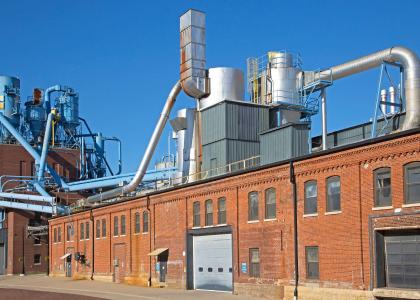About $50 billion in federal funding for energy-saving improvements in homes and buildings is coming. Managers of efficiency programs around the country will need to plan how to integrate current efforts with these massive resources.
The federal Inflation Reduction Act (IRA) and bipartisan infrastructure law together provide on the order of $50 billion for energy efficiency investments, not counting substantial additional resources for electric vehicles and other efficient transportation options. A new ACEEE policy brief explores some considerations and options for how utilities, states, territories, tribes, and localities can integrate these new federal funds with their existing programs—and help them meet their energy efficiency and climate goals by taking energy efficiency efforts to a higher level.
The brief discusses programs for: (1) retrofits to existing homes and apartments, (2) commercial retrofits, (3) residential and commercial new construction, (4) electric vehicles and charging infrastructure, and (5) industry.
Details are still emerging, but there is now enough information to get started on program planning. The federal funding will allow many more households and businesses to be served and to undertake creative new efforts. For example, the federal programs include significant emphasis on serving low- and moderate-income households and communities, and on multifamily buildings. In our view, program administrators should consider maximizing the market transformation from this funding in ways that will continue program impacts after the federal funding runs out.
The best approach for integrating current programs with these new federal ones will vary depending on existing capabilities and how they can best leverage or complement the new funds. Some utilities with well-established programs plan to suggest to their state energy offices (SEOs) that utilities lead the administration of some programs to take advantage of existing staff and services. The decision on whether to do this will be up to the SEO. Where programs might overlap—such as home retrofits—a utility and SEO ideally would offer a single, combined program with a streamlined application and a single service provider with utility and federal funds blended “behind the curtain” to make participation easier for home and building owners. Options could include a utility-operated program with SEO assistance, an SEO-operated program with utility assistance, or both the utility and SEO contracting with the same third-party program implementer.
Some states with robust existing programs may want to target the federal programs to homes not already well-served, such as multifamily buildings and homes in rural areas, disadvantaged communities, and those using propane or oil heat.
Utilities and other program implementers should discuss integration options with their SEOs and utility regulators, developing paths forward together. The result can be effective integrated programs that help customers reduce energy bills and emissions while improving comfort and health and achieving other societal goals such as creating clean energy jobs and helping households that most need assistance.


